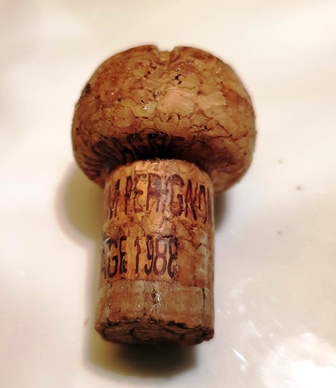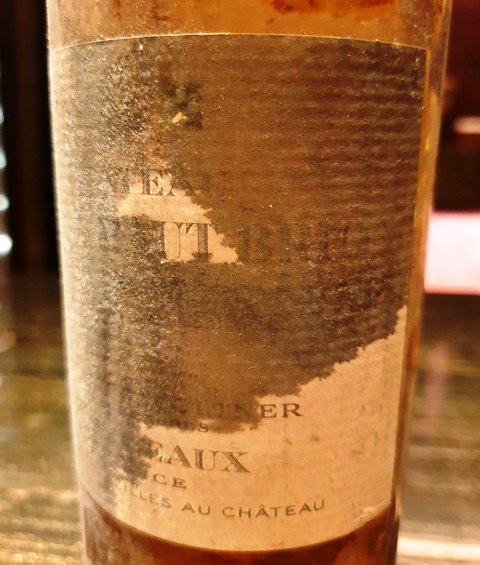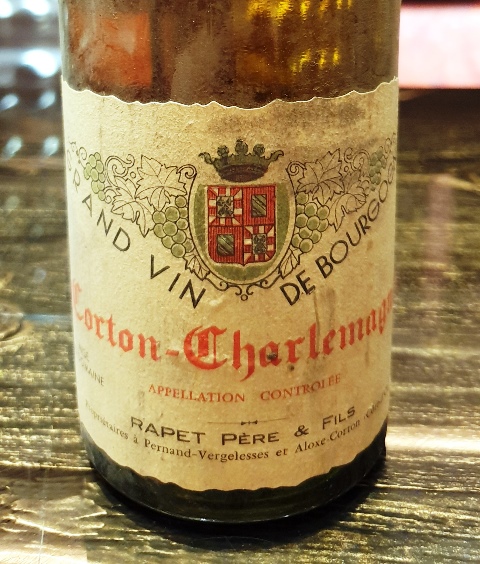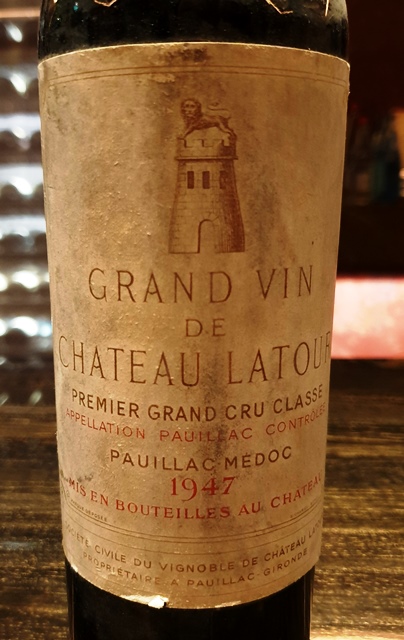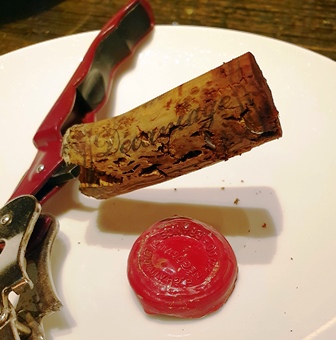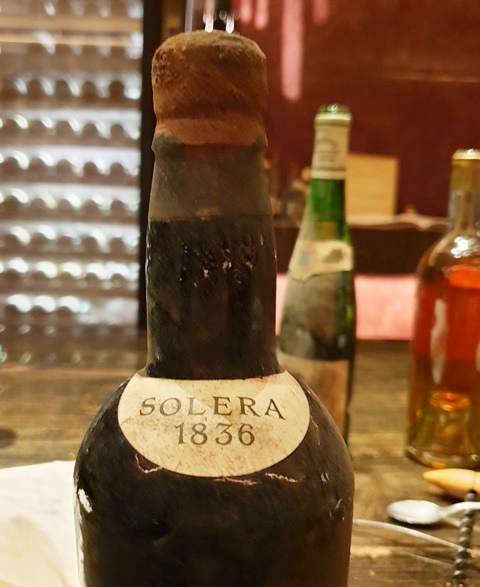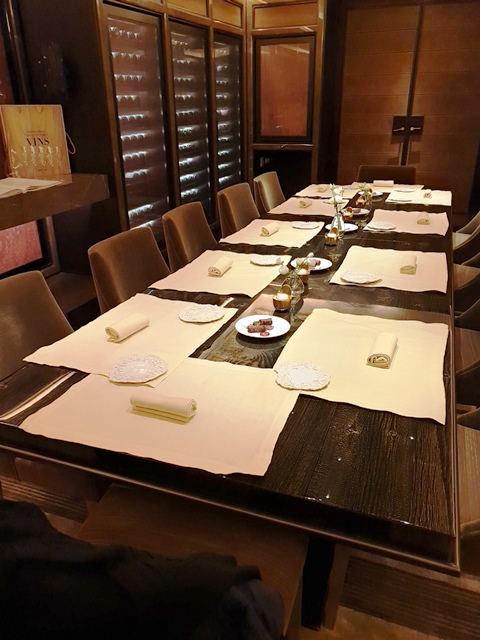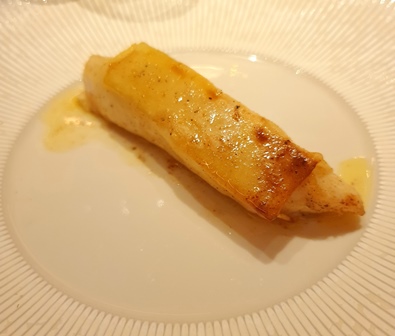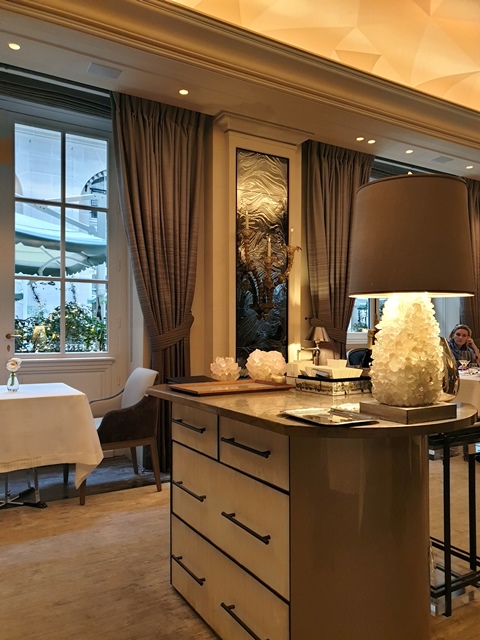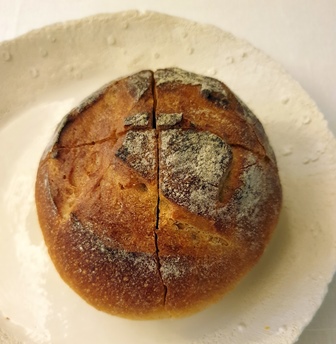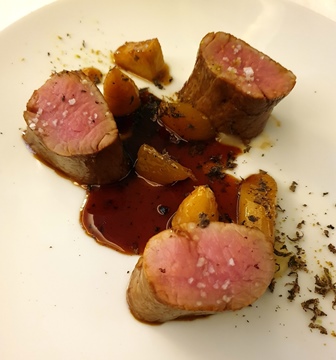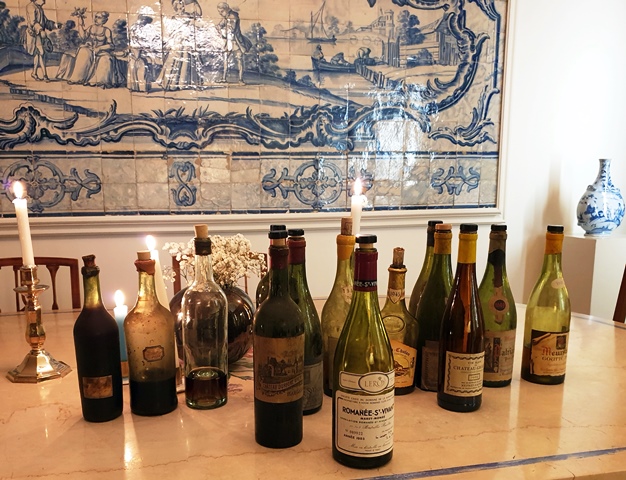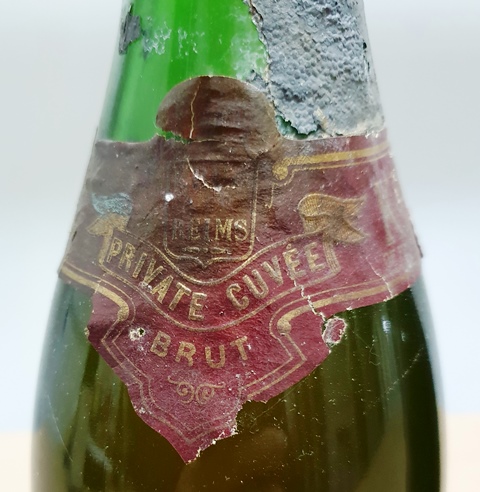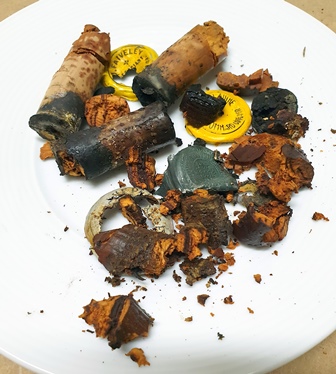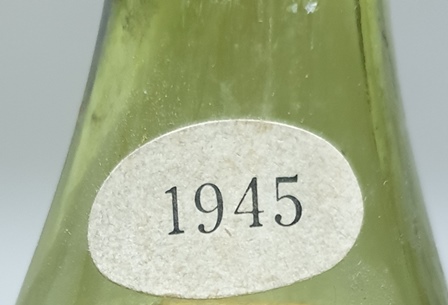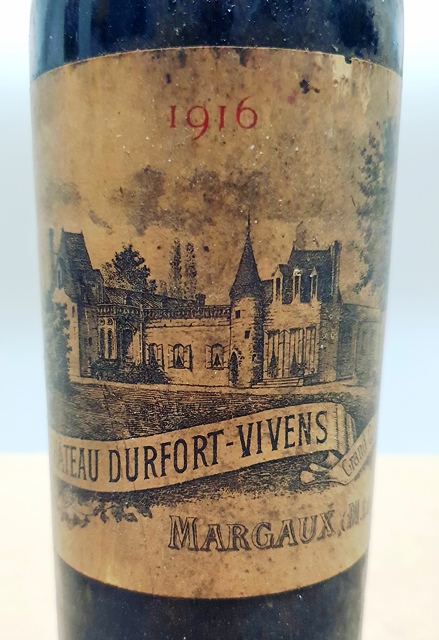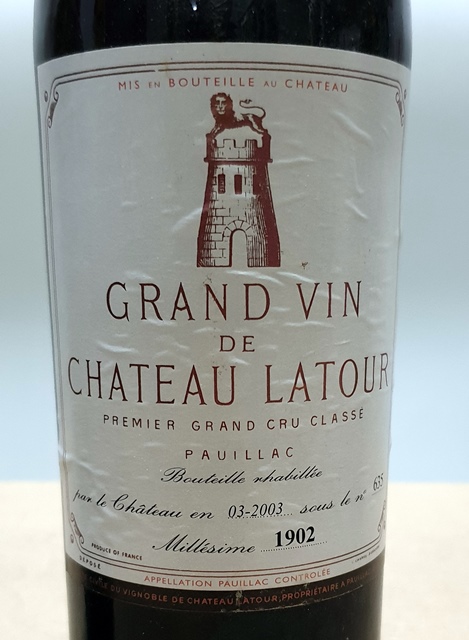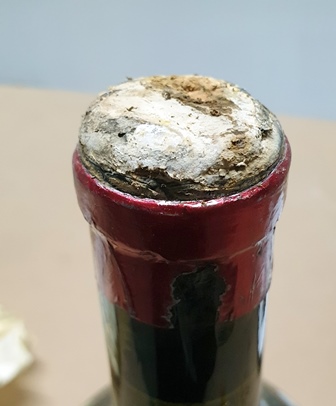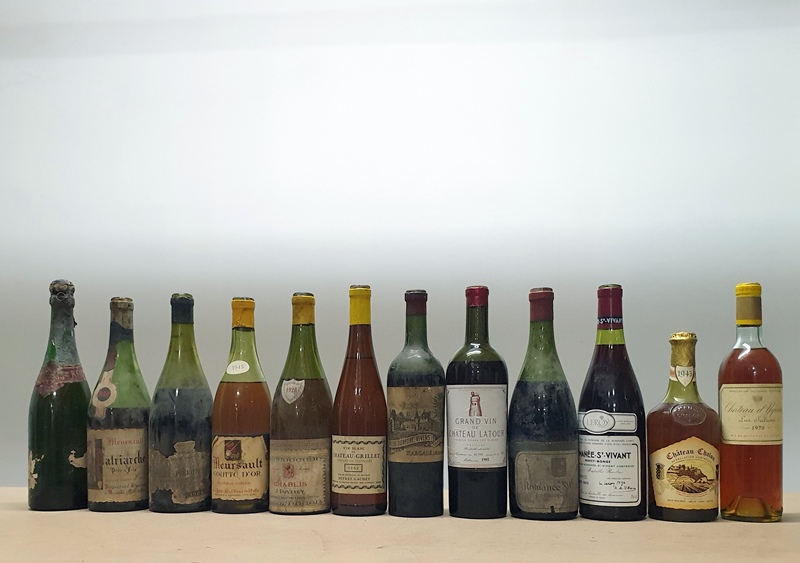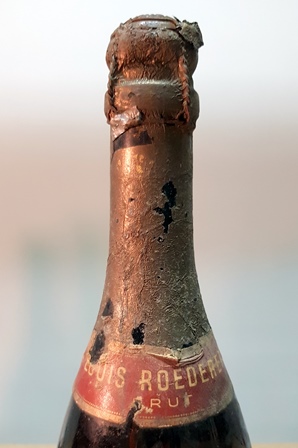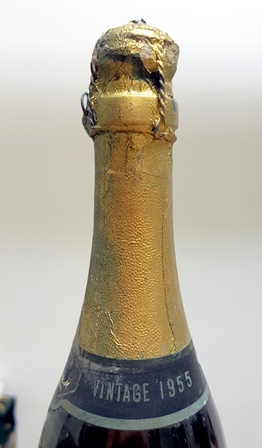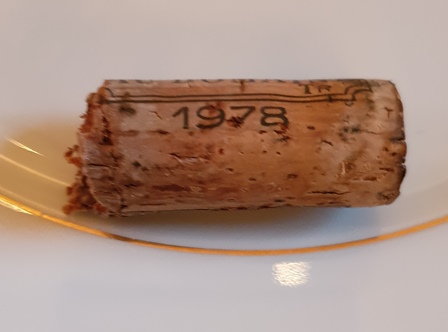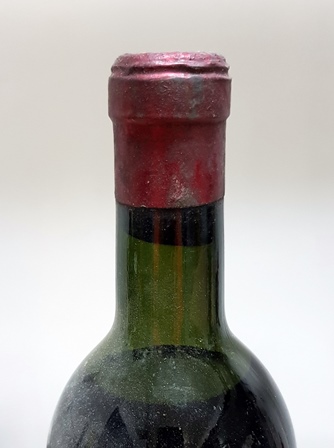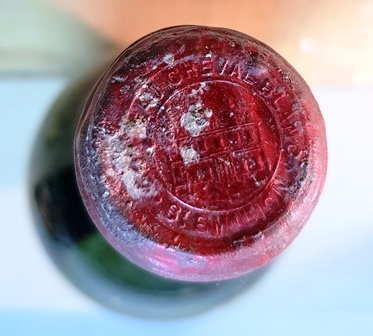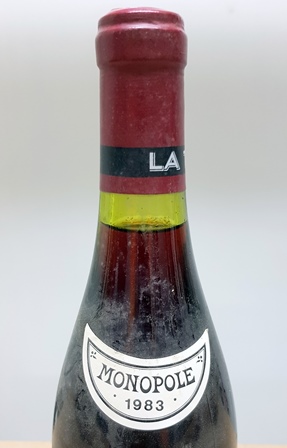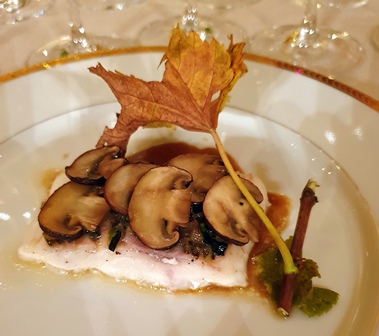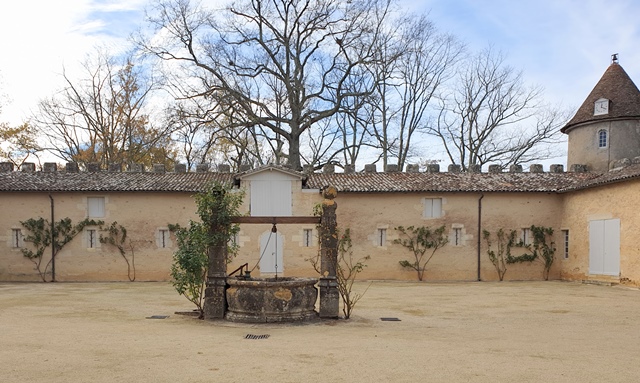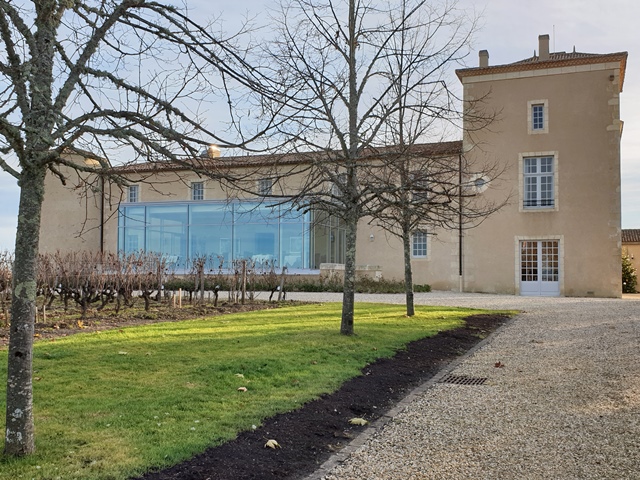Le 232ème dîner de wine-dinners se tient à la Cave d’Exception de l’hôtel de Crillon. La conception du menu aurait dû se faire avec Christopher Hache dont j’apprécie le talent, mais en cours de route c’est avec Boris Campanella qui supervise la cuisine de l’Ecrin que la mise au point du menu s’est faite. Ayant déjeuné à L’Ecrin, le restaurant gastronomique de l’hôtel, pour essayer quelques plats, j’ai pu constater que le dîner sera en de bonnes mains.
A 16 heures je suis accueilli par Xavier, le sympathique sommelier qui avait officié lors du 226ème dîner en ce même lieu. Il a mis toutes les bouteilles debout hier, pour que les éventuelles lies se déposent. Je commence l’ouverture des vins dans l’ordre de service. Le Laville 1951 a un nez intense, le Corton Charlemagne 1961 a un parfum généreux. Le Pétrus 1971 a un nez un peu imparfait, mais rien n’indique qu’il le gardera. Le Latour 1947 est une bombe de fragrances. Il est absolument incroyable que le bouchon de Chambertin 1911 vienne entier au limonadier. Il est d’une densité extrême et ce qui est fou aussi, c’est que le niveau dans la bouteille est à deux centimètres du bouchon. On peut lire sur le bouchon : « bouchon de décantage ». A quoi cela correspond, je ne sais pas. Le nez du Richebourg 1969 est typique du domaine de la Romanée Conti. Ce vin promet. Le vin de Moselle allemand de 1959 a un nez délicat qui ne permet pas de savoir si le vin est un vin sec devenu doux ou un vin doux. Nous verrons cela en son temps. L’Yquem 1918 a un bouchon de reconditionnement en 1986. Son parfum est entre les Yquem devenus secs et les Yquem restés doux. Il y a des fruits exotiques dans son parfum discret. La forme de la bouteille de Solera 1836 interroge : est-elle un porto ou un madère ? Nous sentons avec Xavier et le doute n’existe pas, c’est un madère au parfum d’une fraîcheur folle. C’est le parfum le plus incroyable de tous les vins ouverts. Au seul stade des parfums, sans avoir goûté les vins, le classement serait : 1 – Solera 1936, 2 – Latour 1947, 3 – Richebourg 1969, 4 Chambertin 1911. Mais ce classement ne préjuge en rien de la prestation des vins à table. Pétrus 1971 est le seul vin pour lequel il peut y avoir un léger doute. Il y a tellement de belles surprises que vais me reposer tranquillement dans un salon de l’hôtel, avec une bière artisanale suggérée par Xavier.
J’avais demandé à Xavier qu’il ouvre les champagnes à l’avance. Il m’apporte le bouchon du Dom Pérignon 1988 dégorgé en 2002 qui sent le bouchon. Le bouchon tel qu’il se présente me semble plutôt de 1988 que de 2002 et comme j’avais bu récemment un 1988 au nez de bouchon, voilà une énigme. Est-ce que l’Œnothèque n’est pas Œnothèque ? C’est le seul vin que je vais goûter. En bouche on ne sent pas le bouchon et on se demande si c’est Œnothèque.
Nous sommes onze, dont quatre femmes. Il y a sept bizuts, pour quatre habitués dont moi. Les nouveaux sont majoritaires. Deux suisses sont venus spécialement pour ce dîner. Un habitué est venu de Bordeaux et a dû subir une énième panne d’électricité à la gare Montparnasse. Un couple d’asiatiques avait annulé par crainte des émeutes parisiennes amplifiées sur les télévisions mondiales. Un des bizuts m’a prévenu peu avant 20 heures qu’il ne nous rejoindra qu’à 22 heures. On lui a gardé l’essentiel du repas et des vins.
J’ai ajouté au programme un Champagne Henriot Cuvée des Enchanteleurs 1998 pour démarrer l’apéritif sur des notes agréables et d’accès aisé. Ce champagne joyeux est une bonne entrée en matière, avec une jolie mâche.
Le menu créé pour ce dîner par le chef Boris Campanella est : apéritif autour des légumes de l’hiver / Saint-Jacques de Bretagne à cru, caviar de Sologne / saint-pierre de nos côtes, céleri rave d’île de France / rouget à l’unilatéral, moelle de bœuf, jus aux abats / boudin de homard, fleurette de carapace / filet de veau de lait glacé au jus, cerfeuil tubéreux / foie gras de canard poché au naturel / le fromage Stilton bleu / mangue rôtie et marinée aux pistils de safran / financier noisette à la réglisse.
Le Champagne Dom Pérignon œnothèque 1988 (dégorgé en 2002) a un léger nez de bouchon que tout le monde ressent. Heureusement la bouche n’est pas atteinte. Il n’a pas la vivacité qu’on attendrait d’un Œnothèque. Il voisine sur les coquilles Saint-Jacques avec le Champagne Dom Pérignon 1964 qui a peu de bulles mais un pétillant présent. Ce champagne est rond, gourmand, tout en charme et accomplissement. Il est tout soleil et plein en bouche et fort curieusement, le 1964 met en valeur le 1988 qu’il élargit. Le 1988 prend de l’ampleur. La coquille crue est délicieuse, mais un petit coup de chalumeau l’a brûlée légèrement, ce qui dévie son goût.
Le Château Laville Haut Brion 1951 est d’une incroyable fraîcheur et d’une grande intensité. Il est droit, clair, vif et profond. Il serait impossible de lui donner un âge. A côté de lui, le Corton Charlemagne Rapet Père et Fils 1961 est tout en rondeur et en charme. C’est un magnifique vin généreux et choisir le préféré de ces deux vins magnifiquement accomplis est très difficile. On serait tenté par le charme du bourguignon, mais la fraîcheur tranchante du bordelais nous ramène à lui. Les deux vins sont au sommet de leur art et le saint-pierre avec son céleri est un plat délicieux.
Tous les convives sont émerveillés par la façon dont le rouget magnifiquement traité avec sa sauce et sa moelle met en valeur le Pétrus 1971. C’est fascinant. Le Pétrus est riche, au grain truffé, long et racé sans être tonitruant. C’est un grand vin, conforme à sa légende.
Le boudin de homard est très inattendu mais remarquable. Le Château Latour 1947 a un parfum intense. Il est imposant et tout en lui paraît facile. Il a une belle acidité et sa longueur est sans fin. Si le Pétrus est un noble personnage distingué et élégant, le Latour, c’est Fanfan la Tulipe par Gérard Philipe. Il a un charme étonnant.
La bouteille du Chambertin Chauvenet négociant à Nuit Saint Georges 1911 est d’une rare beauté. Le veau est d’un fondant incroyable. C’est le plat idéal pour mettre en valeur le vin de 107 ans qui n’a pas la moindre ride. Que de certitudes tombent sur la longévité des vins ! J’avais imaginé en composant la liste des vins que ce 1911 serait le gagnant. J’avais vu juste. Droit, parfait, équilibré comme un vin de quarante ans, ce vin est une leçon de choses sur la façon dont on faisait les vins il y a plus d’un siècle. Le caractère terrien de ce vin est enthousiasmant.
Le foie gras poché est une de mes coquetteries pour accompagner les vins du domaine de la Romanée Conti. Celui-ci, réalisé par Boris Campanella est superbe et sa simplicité ne peut cacher un immense talent. Le Richebourg domaine de la Romanée Conti 1969 a un parfum qui m’émeut au plus haut point car il est au sommet des parfums des vins du domaine. Le vin est tout en émotion et malgré tant d’autres grands vins il sera le premier dans mon vote, car sa délicatesse en fait l’exemple type du raffinement des vins du domaine. Quel grand vin tout en délicates suggestions de rose subtile et de sel discret !
Le Piesporter Eremitenglöckchen Bansa and Sohn N. Fromm Mosel 1959 est un vin que j’ai rajouté. Je n’en connais rien. Il apparaît très probablement que c’est un vin sec qui a pris de la douceur. Il est très au-dessus de ce que j’imaginais car il a un charme et un équilibre de grande précision qui en font un partenaire idéal du stilton. Sa délicatesse et son étrangeté nous ravissent.
Le stilton va continuer son chemin avec le Château Yquem 1918 qui a manifestement mangé son sucre, comme on dit. Il est très sec et un peu renfermé. Il a de belles fulgurances notamment sur les délicieuses mangues, mais c’est le seul vin que je considère en-dessous de ce que l’on peut attendre.
Les financiers sont d’une gourmandise rare. Il n’y en a que deux par personne, et on en voudrait mille ! La Soléra 1836 est un madère qui combine une générosité luxuriante avec un goût très sec que l’on adore de sa part alors qu’on la regrettait avec l’Yquem. Ce vin c’est les mille et une nuits, c’est le plaisir absolu que j’aurais mis volontiers premier si le Richebourg n’avait été aussi émouvant.
Nous votons pour cinq vins sur les onze (le Henriot ajouté n’est pas sur les feuilles de vote) et nous sommes onze à voter. Cinq vins ont eu les honneurs d’être nommés premier, le chambertin 1911 quatre fois, Pétrus 1971 trois fois, le Richebourg 1969 deux fois et le Dom Pérignon 1964 et le Latour 1947 chacun une fois. Neuf vins sur onze ont reçu des votes ce qui est un beau score.
Le classement du consensus serait : 1 – Chambertin Chauvenet négociant à Nuits 1911, 2 – Pétrus 1971, 3 – Richebourg Domaine de la Romanée Conti 1969, 4 – Champagne Dom Pérignon 1964, 5 – Soléra 1836, 6 – Château Latour 1947.
Mon classement est : 1 – Richebourg Domaine de la Romanée Conti 1969, 2 – Soléra 1836, 3 – Chambertin Chauvenet négociant à Nuits 1911, 4 – Pétrus 1971, 5 – Champagne Dom Pérignon 1964.
Le classement des plus beaux accords serait le rouget avec Pétrus, transcendantal, le foie gras poché avec le Richebourg puis le boudin de homard avec le Latour. Tous les plats ont été remarquables comme le veau d’une justesse infinie, comme les mangues si bien présentées fondantes elles aussi et comme ces financiers à se damner.
L’ambiance était on ne peut plus souriante, taquine, et j’ai senti que cela paraissait à tous comme quasi naturel que tous les vins anciens soient aussi parfaits. On s’habitue vite à l’excellence ! Au cours du repas plusieurs plans ont été élaborés pour que l’on puisse se revoir autour de belles bouteilles. Alors, faisons-le vite !
les vins dans ma cave
les vins dans la cave d’exception de l’hôtel de Crillon
la table avant d’être dressée
le repos avant le dîner et après ouverture, avec une bière
j’étais si occupé à bavarder que j’ai raté des photos de plats ! quel dommage.
les bouteilles vides alignées dans la cave







